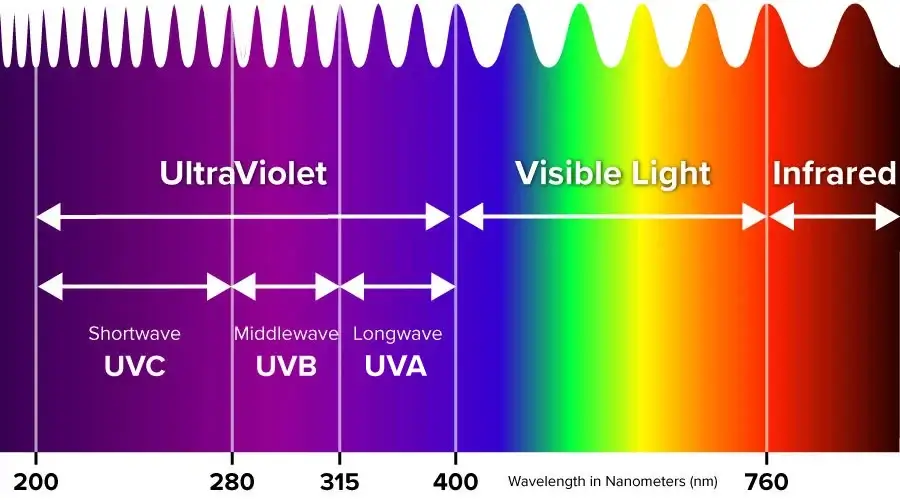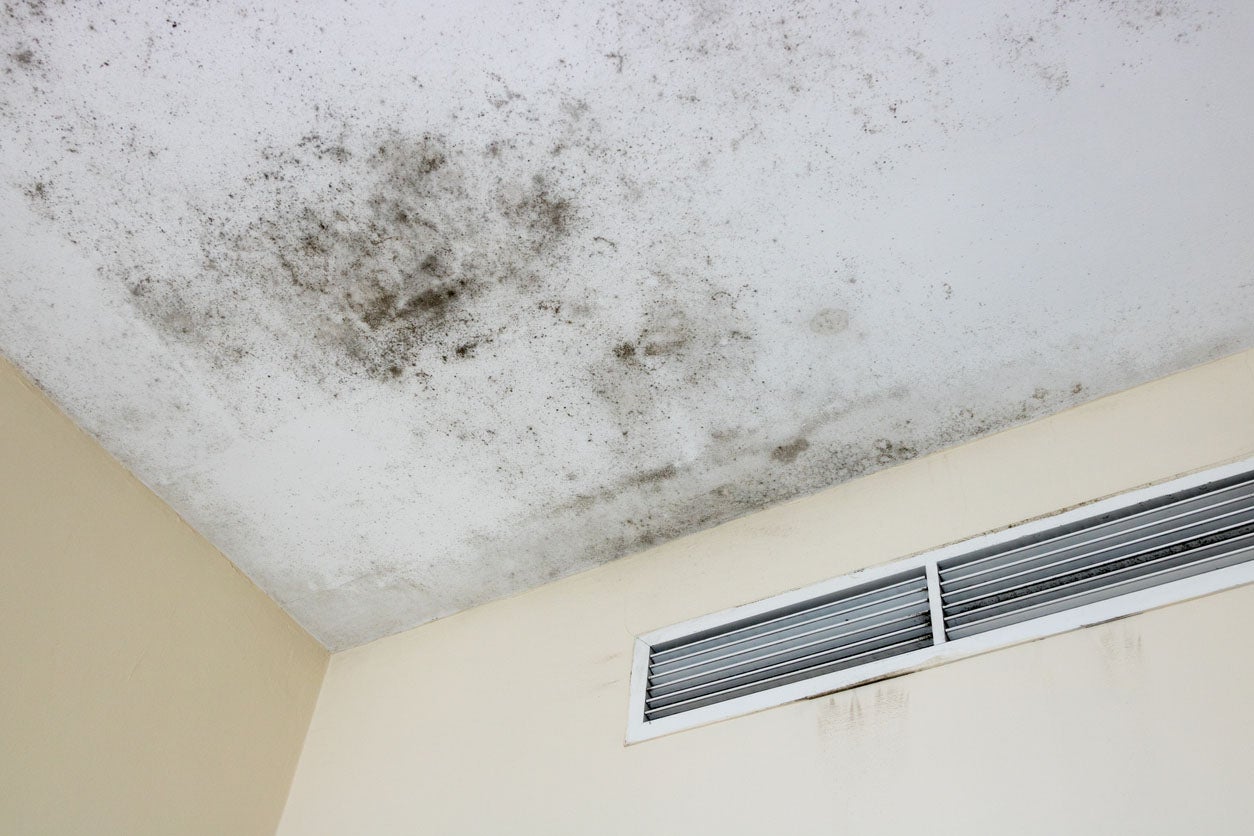
Understanding Mold Growth and Why It’s Dangerous
Mold is a type of fungus that thrives in damp, humid environments, such as basements, bathrooms, and even inside your HVAC system. It can spread rapidly, releasing spores into the air that can trigger allergic reactions, respiratory issues, and other health problems, especially for individuals with asthma or weakened immune systems. Mold can also damage building materials like drywall, wood, and insulation, leading to expensive repairs if left untreated. For more information on how mold affects health, check out this resource from the EPA on mold and health.
While traditional mold remediation involves physically removing mold from surfaces, many people are turning to UV light as a supplemental solution to kill mold spores, particularly in areas that are hard to reach or where mold is likely to return.
How Does UV Light Work to Kill Mold?
UV light, specifically UV-C light, is a short-wavelength ultraviolet light that has been used for decades to disinfect air, water, and surfaces by breaking down the DNA of harmful microorganisms. UV-C light works by penetrating the cell walls of mold spores and disrupting their DNA, which prevents them from reproducing and effectively kills them over time. This makes UV light a valuable tool for air purification systems and HVAC units where mold spores may circulate through the air.
In mold remediation, UV light is typically used in conjunction with other cleaning methods to ensure that spores are destroyed both in the air and on surfaces. Studies have shown that UV-C light can be effective in killing airborne mold spores, making it a useful addition to traditional mold cleanup methods.
Where UV Light is Most Effective in Mold Removal

While UV light is effective at killing airborne mold spores and preventing them from spreading, it’s important to understand its limitations. UV light is most effective in treating mold in the air and on non-porous surfaces, like metal or glass. When mold grows on porous materials such as wood, fabric, or drywall, it penetrates deep into the material, and UV light cannot reach the spores embedded within.
Here are some areas where UV light can be particularly effective in mold remediation:
1. HVAC Systems
Installing UV lights in your HVAC system can help prevent mold spores from circulating through your home. Since mold often thrives in the damp, dark environment of air ducts and cooling coils, UV lights can be strategically placed to kill spores as air passes through the system. This can help prevent the spread of mold to other areas of your home.
2. Air Purifiers
Many high-quality air purifiers come equipped with UV-C light technology. These purifiers are designed to remove airborne mold spores, bacteria, and viruses from the air, creating a cleaner and healthier indoor environment. Air purifiers with UV light can be especially useful in rooms with high humidity, such as basements or bathrooms, where mold is more likely to grow.
3. Bathroom and Basement Surfaces
Bathrooms and basements are often hotspots for mold due to the high moisture levels. UV light can be used as part of a cleaning routine to disinfect non-porous surfaces like tiles, sinks, and shower doors, killing mold spores before they have a chance to spread. However, it’s important to combine UV light treatment with proper cleaning and moisture control to fully address the mold issue.
Limitations of Using UV Light for Mold Removal

While UV light can be an effective tool for killing mold spores, it’s not a one-size-fits-all solution. UV light only works on the mold it directly hits, and its effectiveness depends on the exposure time, the intensity of the light, and the proximity of the mold to the UV source. Mold that has grown deep into porous surfaces or in hidden areas won’t be eliminated by UV light alone.
Additionally, UV light can degrade certain materials over time, especially plastics and rubber. It’s essential to use UV light carefully to avoid damaging surfaces in your home. While UV light can kill mold spores, it doesn’t remove dead mold from surfaces, which means the mold itself will still need to be cleaned up to prevent staining and damage.
Does UV Light Prevent Mold from Returning?
UV light can help prevent mold from returning by killing mold spores in the air and on surfaces before they have a chance to settle and grow. However, to effectively prevent mold from returning, you need to address the underlying cause of mold growth: moisture. If high humidity, water leaks, or poor ventilation continue to affect your home, mold will likely come back, even if you’re using UV light as a preventive measure.
To fully prevent mold from returning, consider combining UV light treatment with moisture control methods such as:
- Using dehumidifiers to reduce humidity levels
- Fixing leaks or water damage immediately
- Improving ventilation in damp areas like bathrooms, basements, and attics
Best Practices for Using UV Light in Mold Remediation

If you’re planning to use UV light as part of your mold remediation strategy, it’s essential to follow best practices to ensure safety and effectiveness. Direct exposure to UV-C light can be harmful to humans, causing skin burns or eye damage, so protective measures are necessary. Here are some tips for safely using UV light to kill mold:
1. Choose a UV Light System Designed for Mold
Not all UV light systems are created equal. Make sure to choose a UV-C light system that’s specifically designed for mold remediation or air purification. These systems are engineered to target microorganisms like mold, bacteria, and viruses and are more effective than standard UV lights.
2. Hire a Professional for Installation
If you’re installing UV lights in your HVAC system or using them to treat mold in hard-to-reach areas, it’s a good idea to hire a professional. Proper installation is key to ensuring that the UV light is positioned correctly and provides adequate coverage. A professional mold remediation company can help you integrate UV light treatment into a broader mold management plan.
3. Use UV Light in Combination with Traditional Mold Removal
UV light should not be your only method for dealing with mold. While it’s effective at killing airborne spores, UV light should be combined with traditional cleaning methods to physically remove mold from surfaces. Mold on porous materials like wood or drywall should be handled by a professional mold remediation company to ensure that all traces of mold are eliminated.
FAQ
| Question | Answer |
|---|---|
| Can UV light completely remove mold from my home? | UV light is effective at killing airborne mold spores and surface mold on non-porous materials, but it cannot reach mold embedded in porous surfaces. To completely remove mold, a combination of UV light and traditional mold removal methods is recommended. |
| Is UV light safe to use in my home? | Yes, UV light is safe to use when properly installed and used according to manufacturer instructions. Direct exposure to UV-C light can be harmful to skin and eyes, so it’s important to follow safety precautions or hire a professional for installation. |
| How long does UV light take to kill mold spores? | The effectiveness of UV light depends on the intensity, proximity, and exposure time. It can take several hours to kill mold spores in the air or on surfaces, so patience is key when using UV light for mold treatment. |
| Can UV light prevent mold from growing back? | UV light can help prevent mold spores from growing back, especially when used in HVAC systems or air purifiers. However, the underlying cause of mold—moisture—must also be addressed to prevent recurrence. |
| Should I use UV light or hire a professional mold remediation company? | While UV light can be a useful tool for killing mold spores, professional mold remediation is recommended for larger infestations or mold embedded in porous materials. A combination of UV light and professional mold removal is often the most effective strategy. |
If you’re dealing with mold in your home and want to explore UV light treatment or need comprehensive mold remediation, contact Citywide Mold Mitigation for expert assistance.

